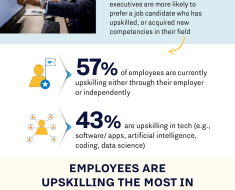Prompt engineering is rapidly evolving, shaping the way we interact with artificial intelligence (AI). As we look towards 2025, several key trends are emerging that promise to redefine the landscape of prompt engineering. This article explores these trends, offering insights into what the future holds for this burgeoning field.
1. The Rise of Mega-Prompts


One of the most significant trends in prompt engineering is the use of mega-prompts. Unlike traditional short prompts, mega-prompts are longer and provide more context, which can lead to more nuanced and detailed AI responses. This trend is gaining traction as it allows for more complex and interactive dialogues with AI systems like GPT-4 and Google Gemini7.
Mega-prompts are particularly useful in scenarios where detailed background information is necessary. For example, in healthcare, a mega-prompt can include a patient’s medical history, symptoms, and other relevant details, enabling the AI to offer more accurate diagnostic suggestions. However, crafting effective mega-prompts requires a balance; too much information can overwhelm the AI, while too little can lead to vague responses.
2. Adaptive Prompting


Adaptive prompting is another exciting development. Researchers are exploring ways for AI models to generate their own prompts based on the context of the conversation2. This reduces the need for manual input and allows the AI to steer the dialogue more effectively. Imagine a customer service chatbot that can adapt its questions based on the user’s previous responses, making the interaction more fluid and natural.
This trend is particularly promising for applications in customer service and virtual assistants, where the ability to adapt in real-time can significantly enhance user experience. Adaptive prompting also holds potential for educational tools, where AI can tailor its teaching approach based on the student’s progress and understanding.
3. Multimodal Prompts


As AI models become more sophisticated, the integration of multimodal prompts—prompts that include both text and visual elements—is becoming increasingly common8. This trend expands the scope of prompt engineering, allowing AI to interpret and respond to a combination of text, images, and even audio inputs.
For instance, in the field of e-commerce, a multimodal prompt could include a product image along with a textual description, enabling the AI to provide more comprehensive recommendations. Similarly, in education, multimodal prompts can enhance learning experiences by combining visual aids with explanatory text, making complex concepts easier to grasp.
4. Ethical Prompting


With the growing influence of AI, ethical considerations in prompt engineering are becoming more critical5. Ensuring fairness, transparency, and bias mitigation in AI-generated content is paramount. Ethical prompting involves crafting prompts that do not inadvertently introduce or amplify biases, ensuring that AI outputs are fair and unbiased.
For example, in hiring processes, ethical prompting can help create unbiased job descriptions and interview questions, promoting diversity and inclusion. As AI continues to permeate various sectors, the importance of ethical prompting will only increase, necessitating ongoing research and vigilance.
5. Generative AI for Prompt Creation


A novel trend in prompt engineering is using generative AI to create prompts1. This approach leverages AI’s ability to generate useful responses to also craft the prompts themselves. By doing so, users can ensure that the prompts are well-structured and tailored to elicit the desired responses from the AI.
This technique can be particularly useful for users who are less familiar with prompt engineering. For instance, a marketer looking to generate engaging social media content can use generative AI to create prompts that guide the AI in producing relevant and captivating posts. However, it’s important to use this method judiciously to avoid over-reliance on AI-generated prompts, which may not always align perfectly with the user’s intent.
6. Enhanced User Interfaces


As AI becomes more integrated into everyday applications, the need for intuitive and user-friendly interfaces is growing6. Prompt engineers are focusing on creating interfaces that make it easier for users to craft effective prompts without needing deep technical knowledge. This trend is particularly important as AI democratizes and more people begin to interact with these models.
For example, drag-and-drop interfaces and guided prompt creation tools can help users generate high-quality prompts effortlessly. These enhanced interfaces can also include real-time feedback, helping users refine their prompts and achieve better outcomes.
7. Interdisciplinary Collaboration


Prompt engineering sits at the intersection of linguistics, psychology, and computer science3. As AI models become more complex, effective prompt engineering will require collaboration across these disciplines. Linguists can help ensure that prompts are clear and contextually appropriate, psychologists can provide insights into user behavior and interaction patterns, and computer scientists can optimize the technical aspects of prompt creation.
This interdisciplinary approach can lead to more robust and effective AI interactions. For instance, in mental health applications, collaboration between psychologists and prompt engineers can result in AI tools that offer more empathetic and supportive responses to users seeking help.
8. Continuous Learning and Improvement


The field of prompt engineering is dynamic, with new techniques and best practices emerging regularly. Continuous learning and improvement are essential for staying ahead in this rapidly evolving field. Prompt engineers must stay updated with the latest research and developments, experimenting with new approaches and refining their skills4.
For example, prompt engineers can participate in online communities, attend workshops, and collaborate with peers to share knowledge and insights. By staying engaged with the latest trends and advancements, prompt engineers can ensure that their skills remain relevant and effective.
9. Real-World Applications and Case Studies


Real-world applications and case studies provide valuable insights into the practical implications of prompt engineering. By examining how prompt engineering is applied in different contexts, we can better understand its potential and limitations.
For instance, in the legal field, prompt engineering can help automate document review and contract analysis, saving time and reducing errors5. In the entertainment industry, prompt engineering can enhance creative processes, enabling AI to generate scripts, music, and visual art. By exploring these applications, we can uncover new opportunities and challenges in prompt engineering.
10. The Long-Term Value of Prompt Engineering


Prompt engineering is not just a fleeting trend; it holds long-term value and relevance. As AI models become more integrated into diverse applications—from healthcare to entertainment—the need for effective communication becomes paramount. Prompt engineers will play a crucial role in ensuring that these models are accessible, user-friendly, and contextually relevant.
Moreover, as AI democratizes and more people without technical expertise begin to interact with these models, the role of a prompt engineer will evolve. They’ll be responsible for creating intuitive interfaces, crafting user-friendly prompts, and ensuring that AI remains a tool that augments human capabilities.
Conclusion
The future of prompt engineering is bright, filled with exciting trends and developments that promise to enhance our interactions with AI. From the rise of mega-prompts and adaptive prompting to the integration of multimodal prompts and ethical considerations, prompt engineering is poised to play a pivotal role in shaping the future of human-AI interactions. As we move towards 2025, staying abreast of these trends will be essential for anyone involved in the field of AI.
Sources:
1. Prompt Engineering Masterclass for AI Automation 2025 – LinkedIn
2. Prompt Engineering: The Next Big Thing in AI? – Vault
3. What is the future of Prompt Engineer? – DeshGujarat
4. 10 Prompt Engineering Skills You Need to Work with AI in 2024 – Dataquest
5. Prompt Engineering: The New Vanguard of Legal Tech – ComplexDiscovery
6. Another Task for HR in the GenAI Era: Find a Prompt Engineer – SHRM
7. Mega-Prompts Are The Latest Powerful Trend In Prompt Engineering – Forbes
8. 6 More AI Breakthroughs to Expect in 2024 – CodiumAI
Please note, that the author may have used some AI technology to create the content on this website. But please remember, this is a general disclaimer: the author can’t take the blame for any mistakes or missing info. All the content is aimed to be helpful and informative, but it’s provided ‘as is’ with no promises of being complete, accurate, or current. For more details and the full scope of this disclaimer, check out the disclaimer page on the website.



